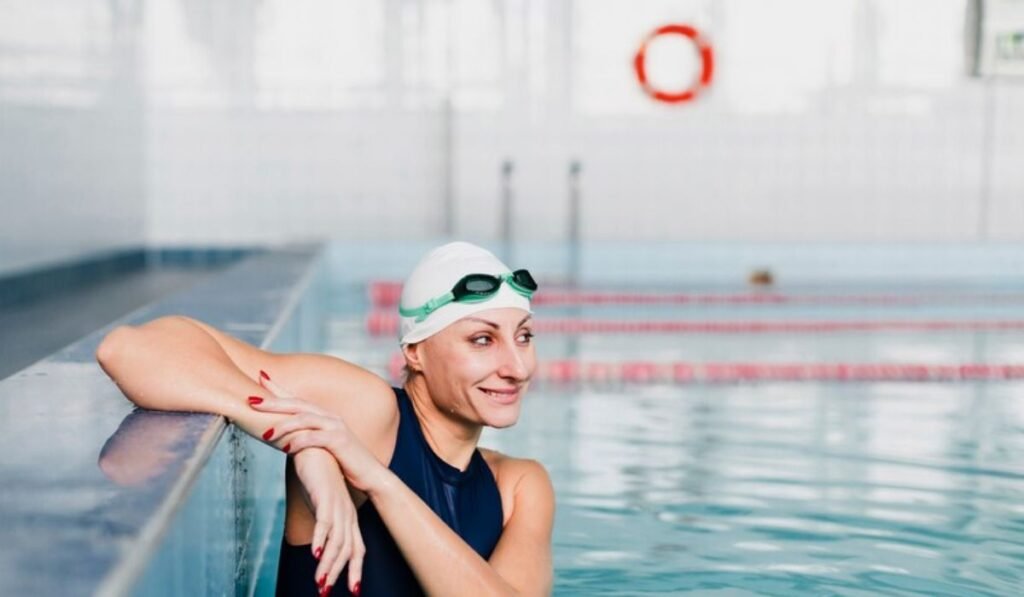Benefits of Different Swim Strokes
Learning various swim strokes can significantly enhance your swimming skills. Each stroke has advantages and challenges, offering a comprehensive workout for different muscle groups. Research shows swimming can dramatically improve cardiovascular health, flexibility, and muscle strength. Swimming engages almost every muscle in your body, providing a balanced workout that few other activities can match.
From freestyle’s swift strokes to the butterfly’s vigorous movements, each stroke has something unique to offer in terms of fitness and technique. Knowing multiple strokes can also help prevent overuse injuries by ensuring a more varied workout for the body.
Freestyle Swimming
Freestyle is often the first stroke taught to beginners due to its straightforward technique and speed. Understanding different swimming strokes for beginners is crucial for both recreational and competitive swimmers. It’s excellent for building endurance and works several major muscle groups, including the arms, shoulders, and core. According to Swimming World Magazine, freestyle swimming helps improve breathing techniques and builds upper body strength. Swimmers use a flutter kick, coordinated with a rotating arm movement, making this stroke highly effective for a full-body workout.
The simplicity of freestyle makes it a favorite for many. Its rhythmic nature can be meditative, allowing swimmers to focus on breathing while covering long distances efficiently. The stroke’s efficiency and speed make it a cornerstone in competitive swimming, allowing athletes to achieve remarkable distances in minimal time.
Backstroke Swimming
Backstroke is unique as it allows swimmers to breathe freely and maintain a steady pace. Unlike other strokes, it requires swimmers to stay on their backs, which can be initially disorienting but highly rewarding once mastered. Backstroke is highly effective for improving posture and alleviating back pain. It engages the muscles around the spine, aiding in better spinal alignment and greater overall flexibility. Olympians like Ryan Lochte have exemplified the efficiency and speed achievable with this stroke, making it a prominent choice in competitive swimming.
In addition, backstroke swimming can significantly enhance mental relaxation. The repetitive arm movements and the buoyancy of being on your back can be very calming, similar to floating on water, making it an excellent way to de-stress after a long day.
Breaststroke Swimming
Breaststroke is one of the slower swim strokes but is excellent for coordination and timing. It engages the chest and thigh muscles more than other strokes, making it great for muscle toning. The stroke involves a unique frog-like kick paired with a simultaneous arm movement, which requires precise timing and coordination. A Health.com article highlights its low-impact nature, which is ideal for swimmers of all ages and fitness levels. Its slower pace also makes it one of the most sustainable strokes for long-distance swimming.
Breaststroke’s steady pace makes it a favorite for endurance and muscle-building workouts. Its low-impact nature reduces joint stress, making it suitable for older adults and people recovering from injuries. A relaxed and controlled breathing pattern can improve lung capacity and overall cardiovascular health.
Butterfly Swimming
The butterfly stroke is arguably the most challenging due to its unique technique and strength requirements. It involves a simultaneous overhead arm movement and a powerful dolphin kick, creating a wave-like motion through the water. However, the rewards are substantial, as it offers an intense cardio workout and builds upper body strength quickly. Swimmers find that the butterfly stroke improves their muscle coordination and overall athleticism. Many professional swimmers use the butterfly to perfect their shoulder and core muscles, enhancing their performance in other strokes.
To master the butterfly stroke, work on your dolphin kick and synchronize your arm movements. Consistent practice and proper technique can help overcome the initial challenges of this demanding stroke. The butterfly stroke is a physical workout and a mental challenge, requiring focus and determination to execute correctly.
Real-Life Success Stories
Consider Jane, a 45-year-old who discovered swimming as a way to manage stress and improve her health. She learned all four strokes over a year and saw significant improvements in her cardiovascular health and mental well-being. Not only did Jane lose weight, but she also reported better sleep and reduced anxiety levels. Stories like Jane’s demonstrate the transformative power of swimming, proving that it’s always possible to start.
Jane’s experience shows how learning multiple swim strokes can lead to a well-rounded and fulfilling swimming journey. The key is consistency and a willingness to learn, regardless of age or initial skill level. Jane would say, “Swimming gave me a second lease on life.”
Getting Started and Tips
If you’re interested in diving into the swimming world, starting with the basics is essential. Enrolling in a swim class can offer structured guidance, making it easier to learn different strokes efficiently. Private instructors or swim schools can provide personalized lessons catering to your needs and skill levels. Always warm up before swimming to prepare your muscles and prevent injuries. A balanced diet of protein and carbohydrates can fuel your performance and aid recovery.
Being adequately equipped is also crucial. Use proper gear such as goggles and swim caps. Goggles can protect your eyes from chlorine, while swim caps can reduce drag. Starting slowly and focusing on technique over speed can help you build a solid foundation. With persistence and practice, the strokes will become second nature, allowing you to enjoy all the benefits swimming offers.
Top Tips for Beginners
- Start slowly and build up your endurance over time. Begin with short distances and gradually increase as you gain confidence.
- Focus on perfecting one stroke at a time before moving on to the next to ensure you master the techniques correctly.
- Use proper gear, such as goggles and swim caps, to enhance your swimming experience and comfort.
- Listen to your body and take breaks when needed to avoid overexertion. Pacing yourself will help you maintain consistency and prevent burnout.
ALSO READ: zoltrakk






